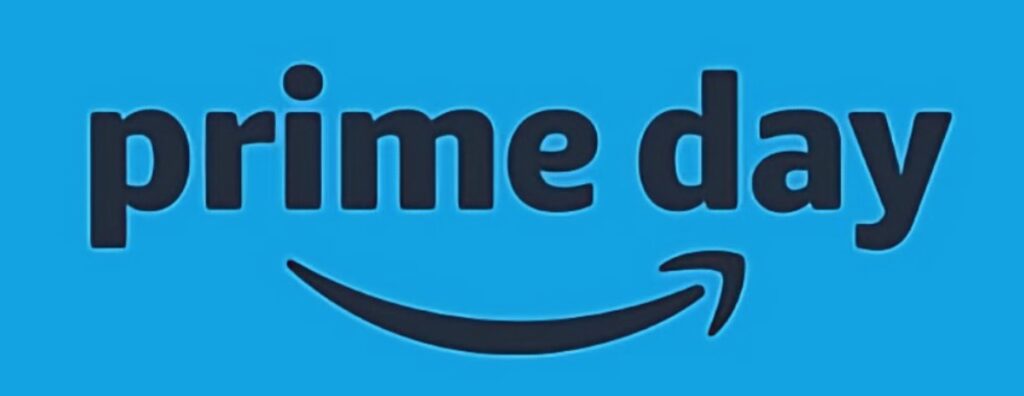Ever wonder how some brands seem to have a VIP backstage pass to Google’s top rankings while the rest of us wait in line, hoping for a spot in the spotlight? Imagine turning the SEO tide in your favor, not just with hard work but with billionaire savvy. Welcome to “The Billionaire’s Guide to SEO: How Jeff Bezos Wins in Google Rankings.”
In the vast expanse of the internet, where competition is as fierce as it gets, Amazon, under Jeff Bezos’s leadership, has not just survived; it has conquered, thrived, and set the gold standard for how e-commerce websites dominate search engine rankings. How does Amazon, a behemoth that started in a garage, consistently stay at the apex of Google’s search results? Is it sheer luck or endless resources, or is there a method to the madness?
This post isn’t about the average SEO tactics we know and dutifully implement. No, it’s about dissecting and understanding the game from a billionaire’s perspective. It’s about peering into Jeff Bezos’s playbook to uncover how a strategic, long-term vision combined with an unwavering focus on customer satisfaction and cutting-edge innovation in user experience can elevate your SEO game and redefine it.
So, if you’re ready to explore the SEO strategies that have propelled Amazon to the forefront of Google’s search engine results page (SERP), turning it into an untouchable titan of the digital age, buckle up. You’re about to embark on a journey to challenge everything you thought you knew about SEO through the lens of one of the world’s most successful entrepreneurs. Let’s dive into the billionaire’s blueprint for SEO success and uncover how you can apply these golden strategies to your business, climbing the Google rankings ladder with the finesse of Jeff Bezos himself.

The Bezos Blueprint for SEO Success
At the heart of Amazon’s stratospheric success lies a blueprint, not of mere chance, but of strategic, calculated moves that have redefined the playing field of SEO. This blueprint, inspired by Jeff Bezos’s visionary leadership, is a testament to what happens when you blend long-term ambition with a laser-focused execution of customer-centric strategies and technological innovation. Here’s how the Bezos Blueprint breaks down:
Visionary Goal Setting
Jeff Bezos’s approach to SEO begins with the end in mind. Unlike the traditional short-term gains perspective, Bezos champions a future-focused vision, understanding that true SEO dominance is a marathon, not a sprint. By aiming for long-term success, Amazon has been able to implement SEO strategies that build on brand reliability, trust, and authority, elements that don’t just boost rankings but cement Amazon’s place at the top.
Note: Craft your SEO strategy with a 10-year vision. Think beyond immediate metrics; build a brand that becomes synonymous with your niche. This will ensure that your SEO efforts contribute to a legacy rather than just a momentary peak in rankings.
Customer Obsession
“Start with the customer and work backward.” This Bezos mantra is the cornerstone of Amazon’s SEO strategy. Understanding and anticipating the customer’s search intent has allowed Amazon to tailor its keyword strategy, content creation, and overall user experience to meet the user’s needs. By prioritizing customer satisfaction above all, Amazon ensures that its site structure, content, and SEO strategies always align with enhancing the customer journey.
Pro Tip: Dive deep into customer analytics, forums, and feedback to understand your audience’s desires. Use this insight to drive your SEO strategy, from keyword research to content creation, ensuring your site resonates with and serves your target audience.

Innovation in User Experience
Amazon’s relentless pursuit of innovation is most visible in its user experience (UX) design. Recognizing that Google increasingly prioritizes sites offering superior UX, Amazon optimizes its site architecture, speed, and navigation to ensure a seamless customer journey. This focus on UX improves customer satisfaction and signals to Google that Amazon is a high-quality, authoritative site worthy of top rankings.
Takeaway: Regularly audit and update your website’s UX to ensure it meets the highest standards. Employ A/B testing, keep abreast of the latest UX trends, and always look for ways to reduce friction in the user journey. Remember, satisfied users are your best advocates when climbing the SEO rankings.
Mastering the Art of Long-Tail Keywords
Diving into the world of SEO to master long-tail keywords requires finesse, strategy, and a playbook straight out of Amazon’s war room. Let’s break down this secret weapon, from its core to Amazon’s cutting-edge application, and show you how to wield it with the same precision.
Understanding Long-Tail Keywords
Picture long-tail keywords as the secret passages through the dense forest of SEO. They’re the precise, often longer phrases that searchers use when closing in on exactly what they want. While single words or short phrases are the wide rivers that everyone tries to navigate, long-tail keywords are the streams that lead directly to the treasure—targeted, ready-to-act audiences. This isn’t about casting a wide net; it’s about casting the right one, where every thread is designed to catch the fish you want.
Amazon’s Approach to Long-Tail Keywords
Imagine how Amazon, the digital colossus, zeroes in on these secret passages. It’s not by accident but by design. Amazon says with every product listing and description, “We know what you’re searching for, and here it is.” This precision targeting comes from an intense analysis of customer behavior, search trends, and the kinds of questions people ask in the real world. Amazon doesn’t just aim to appear in search results; it seeks to dominate them by matching its offerings to the searcher’s intent as closely as possible.
For Amazon, long-tail keywords are less about the volume of search traffic and more about its quality. They convert browsers into buyers by speaking their language, addressing their specific needs, and offering solutions that feel tailor-made. This strategy doesn’t just improve rankings; it builds relationships.
Tools and Techniques for Identifying Long-Tail Keywords
How do you mirror this in your own quest for SEO supremacy? It starts with becoming a bit of a digital detective:
- Keyword research tools are your best friends: Dive into the depths with Ahrefs, SEMrush, or Moz. These tools don’t just give you keywords; they give you insights into what your audience really wants.
- Mine the gold in search query reports: If you’re running ads, your search query reports are like treasure maps, pointing to the exact phrases people use to find your ads. This is direct feedback from your audience, telling you what they’re looking for.
- Get creative with Amazon’s search bar: Even Amazon can be a tool. Use its search bar to uncover the long-tail phrases it suggests. These are not random; they’re based on actual searches by real users.
- Eavesdrop on social media and forums: Social platforms, Reddit threads, and Quora questions are where your audience hangs out and talks about their needs, worries, and desires. Listen closely, and you’ll find a goldmine of long-tail keywords.

Building a User-Centric SEO Empire
Crafting an SEO strategy that will stand the test of time requires more than keywords and backlinks; it demands building a kingdom where user experience (UX) is the crown jewel. Let’s explore how crafting a user-centric SEO empire aligns with Google’s royal court of ranking factors and follows the blueprint laid out by Amazon, Jeff Bezos’s castle.
The Role of User Experience in SEO
In the grand tapestry of SEO, Google’s algorithm updates have increasingly placed user experience at the heart of its ranking factors. Why? Because Google’s ultimate allegiance is to its users. Sites that offer a royal experience—fast, intuitive, and engaging—are heralded with higher rankings. It’s a simple decree: prioritize the user, and you shall be rewarded. UX is no longer just a piece of the puzzle; it’s the corner piece that sets the foundation for everything else.
Analyzing Amazon’s User Experience
Enter the halls of Amazon, a domain where UX reigns supreme. Every element, from the lightning-fast loading times to the intuitive search functionality, is designed to serve the user’s quest for a seamless shopping experience. Notice how Amazon employs a predictive search feature that quickly guides you through its vast inventory. Product pages are kingdoms of their own, offering detailed descriptions, user reviews, and related items, ensuring that all questions are answered before they’re even asked.
The secret to Amazon’s UX isn’t just its features but also its commitment to reducing friction at every turn. One-click purchasing, easy navigation, and personalized recommendations are not just conveniences; they are the threads that weave together the tapestry of a user-centric experience, making Amazon not just a site to visit but a realm to return to time and time again.
Practical Tips for Enhancing User Experience
Crafting a user-centric SEO empire in the likeness of Amazon’s kingdom requires attention to detail and a commitment to your subjects—the users. Here are actionable decrees to elevate your site’s UX:
- Speed is Sovereign: Patience is a rare commodity in the digital kingdom. Optimize your site’s loading times with compressed images, streamlined code, and a reliable hosting service. Let your pages load with the speed of a galloping steed.
- Navigational Clarity: Ensure your site’s architecture is as easy to navigate as a well-drawn map of the realm. Transparent menus, logical site structure, and a search bar are your compasses; make sure they point true north, guiding users to their desired destination.
- Mobile First: With most of your audience exploring your website from their mobile devices, a mobile-first design isn’t just wise; it’s essential. Ensure your site is as splendid on a phone as on a desktop.
- Engage and Conquer: Content is the feast at your banquet. Serve it rich, engaging, and relevant. From product descriptions to blog posts, ensure every word engages your audience, answering their queries and enchanting their senses.
- Feedback Loops: Listen to the whispers of your people. Whether through reviews, surveys, or usability tests, user feedback is the crystal ball that reveals how well your UX strategies are faring. Heed the insights and adjusted accordingly.

Leveraging Technical SEO and Analytics
Amazon’s empire reveals a landscape where technical SEO is not just a strategy but the foundation of its online dominance. In this realm, every click, query, and page is meticulously optimized to ensure that Amazon meets the user’s search intent and surpasses their expectations, setting the gold standard for e-commerce SEO.
Here, we delve into the intricate world of technical SEO practiced by Amazon. In this world, site architecture, programmatic content creation, and user engagement converge to create an unparalleled user experience, driving the giant’s billion-dollar e-commerce store to the pinnacle of Google rankings. This exploration uncovers the unique facets of Amazon’s approach, illustrating how a synergy of technology and user-centric optimization crafts the blueprint for SEO success.
Programmatic SEO: Scaling Amazon’s Vast Product Universe
Amazon’s use of programmatic SEO represents a pinnacle of innovation in handling SEO at scale. With millions of product listings, manually optimizing each page for search engines would be insurmountable. Here, programmatic SEO allows Amazon to automatically generate SEO-friendly content for product titles, descriptions, and meta tags based on templates that follow SEO best practices.
This automation ensures consistency across millions of product pages, each optimized for relevant keywords without human intervention. Amazon’s genius lies in its ability to blend this automation with user-generated content, like reviews, to keep the product pages fresh and highly relevant to search queries. This strategy enhances the site’s SEO performance and caters to specific user intents, dramatically improving the likelihood of ranking for a wide array of long-tail keywords.
Product Descriptions: The Art and Science of SEO Copywriting
Amazon’s product descriptions are a masterclass in SEO copywriting. They are meticulously crafted to include relevant keywords without compromising the quality of information. Each description is designed to provide maximum value to the user, incorporating key features, benefits, and even comparisons with similar products. This approach not only aids in converting potential buyers but also ranks the product pages higher in search results.
Beyond the primary descriptions, Amazon utilizes bullet points to break down the key features, making the content easily scannable for users and search engines. This structured approach to product descriptions ensures that critical information is highlighted, improving user experience and SEO.
Reviews: Crowdsourcing Content and Credibility
Reviews on Amazon do more than just provide social proof; they are a powerhouse of SEO. Each review adds unique, fresh content to product pages, significantly enhancing the page’s relevance and authority in the eyes of search engines. This user-generated content is rich with natural language and long-tail keywords, often mirroring the exact search queries potential customers use, thereby boosting the product page’s search visibility.
Furthermore, reviews contribute to a product page’s dynamic content, signaling to search engines that the page is active and valuable to users. This not only helps improve rankings but also maintains them over time. Amazon’s ability to aggregate a vast number of reviews and questions & answers for almost every product amplifies its domain authority, setting it apart from competitors in search engine rankings.
What Sets Amazon Apart?
Amazon’s approach to SEO transcends traditional tactics. It integrates programmatic SEO, strategic product descriptions, and user-generated reviews to create a self-sustaining ecosystem that enhances its search engine visibility and user engagement. This blend of automation with human and user-generated inputs ensures that Amazon’s product pages are always optimized, relevant, and authoritative.
Through programmatic SEO, Amazon manages the Herculean task of keeping millions of product pages search-friendly. The meticulous attention to detail in product descriptions serves both the algorithms and the user’s need for information. Meanwhile, the strategic use of reviews enriches the site with fresh, keyword-rich content and builds trust and credibility among users. Together, these elements form the backbone of Amazon’s technical SEO strategy, enabling it to dominate the e-commerce space in search rankings.

The PR Machine – Earning Media, Earning Trust
Amazon’s Public Relations (PR) and marketing strategies are pivotal in its overarching SEO success. They intertwine sophisticated PR campaigns with event-driven excitement to bolster their dominance in search engine rankings. At the heart of this lies Prime Day, a spectacle of sales that showcases Amazon’s marketing prowess and significantly impacts its SEO through increased search volume and backlinks.
Strategic Media Relations and Prime Day’s PR Triumph
Amazon has adeptly woven its narrative through strategic media relations, ensuring that its story is heard and resonates with its audience in a manner that benefits the brand’s SEO and market standing. The introduction of Prime Day in 2015 was a masterstroke in this strategy, transforming a sales event into a global phenomenon that commands massive media attention and drives unprecedented traffic to Amazon’s site.
Prime Day debuted on July 15, 2015, to celebrate Amazon’s 20th birthday. This event offered exclusive deals to Prime members. This event has grown exponentially, with 2023 marking its biggest yet. Prime members purchased over 375 million items, saving over $2.5 billion across millions of deals, making it the single most significant sales day in Amazon’s history (US About Amazon).
Amazon’s Digital Marketing Mastery: A Backbone for SEO
Amazon’s digital marketing strategy plays a crucial role in its SEO success. The company’s focus on customer-centricity, innovative technology, and a relentless pursuit of customer satisfaction have been vital. Amazon leverages customer reviews, free shipping, and discounts to enhance the customer experience, indirectly boosting SEO by increasing user engagement and trust. Creative digital marketing campaigns, such as #AurDikhao and #DiwaliOnAmazon in India, further amplify Amazon’s brand visibility online (LOGICGRAPE BLOG).
Amazon’s approach extends beyond traditional SEO. It harnesses the power of its events like Prime Day to generate a buzz that transcends the immediate spike in sales, leaving a lasting impact on its search rankings. Prime Day garners attention not only due to the deals offered but also the extensive media coverage and social media buzz it generates, resulting in a significant influx of backlinks and searches that bolster Amazon’s SEO performance.

The SEO Afterglow of Prime Day
The aftermath of Prime Day illustrates a masterful execution of event-driven PR’s SEO benefits. The surge in searches for Amazon and its products during and after Prime Day enhances Amazon’s long-term search engine visibility. This event-driven approach and strategic media relations and digital marketing campaigns showcase Amazon’s ability to integrate PR with SEO, turning temporary attention into enduring online dominance.
Amazon’s PR strategy, mainly through Prime Day, demonstrates an advanced understanding of leveraging media relations and event-driven excitement to achieve significant SEO benefits. This blend of direct customer engagement through unbeatable deals and indirect SEO advantages through increased online visibility and backlinks has cemented Amazon’s status as a leader not just in retail but also in digital marketing and SEO.
Conclusion: Summing Up the Billionaire’s SEO Strategy
Navigating the vast digital expanse, we’ve unpacked the billionaire’s blueprint for SEO mastery—a strategy not forged in the crucible of quick wins but built on the bedrock of visionary foresight, customer obsession, and relentless innovation. Amazon’s dominance under Jeff Bezos’s leadership has revealed a multifaceted approach to securing the coveted top spots on Google’s search engine results pages (SERPs).
At the heart of this strategy lies the art of long-tail keyword optimization, a commitment to an unparalleled user experience (UX), leveraging cutting-edge technologies for programmatic SEO, and robust PR machinery that turns events like Prime Day into SEO goldmines. This holistic approach underscores the importance of understanding and anticipating customer needs, optimizing every touchpoint in the user journey, and utilizing data and technology to streamline and enhance the SEO process.
Amazon’s success story teaches us that SEO is not just about keywords and backlinks; it’s about building a brand that resonates deeply with users, ensuring that every interaction adds value, and consistently meeting and exceeding customer expectations. It’s about thinking ahead, innovating, and always aiming for long-term growth over short-term gains.
Call to Action: Start Implementing These Strategies in Your Own Business
The path to replicating Amazon’s SEO success in your own business requires more than admiration—it demands action. Begin by embracing a customer-first approach, meticulously researching and integrating long-tail keywords into your content strategy. Dive deep into your website’s UX, ensuring that each visitor has a seamless, engaging experience that encourages not just immediate conversion but long-term loyalty.
Leverage the power of programmatic SEO to manage and optimize your content at scale. Be bold in using events, product launches, or unique brand stories to create buzz and earn valuable backlinks. Remember, the tools and technologies at your disposal—AI-driven content optimization platforms, advanced SEO software, and analytics tools—are your allies in this journey.
Embrace your SEO strategy’s Bezos-like mindset of relentless improvement and long-term vision. Start implementing these billionaire-backed strategies in your own business and watch as you climb the ranks, not just in Google’s SERPs but also in your customers’ perceptions. The road to SEO dominance is paved with insight, innovation, and the indomitable spirit of aiming for the stars—just as Amazon has under Jeff Bezos’s guidance. Begin your journey today and transform your brand into an SEO powerhouse.


Great post as always, Thanks Bart
Thanks Max!